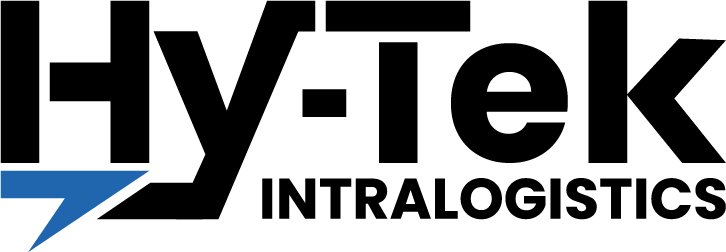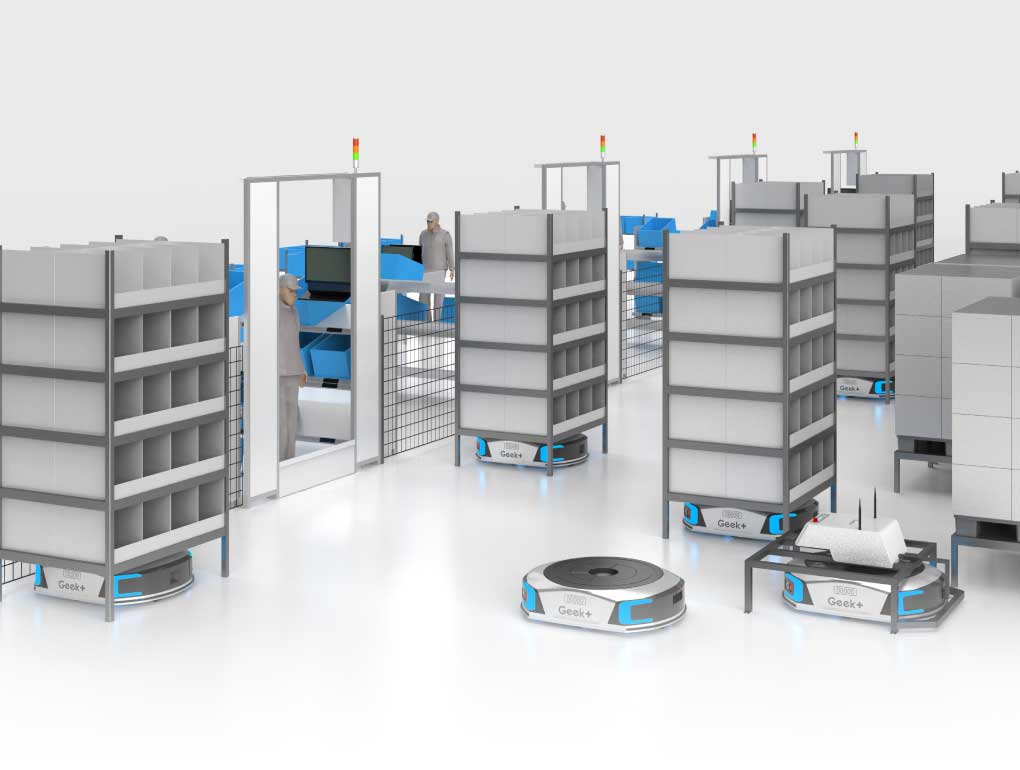In a recent episode of The Automation Insider, Hy-Tek’s Joe McGrath sat down with Robert Schubert, Regional Sales Manager at Geek+, to explore how robotic system design changes based on the needs of specific industries. From beverage distribution to e-commerce to 3PL operations, the conversation highlights how thoughtful process design, not just flashy technology, is what drives successful automation outcomes.
Beverage Distribution: Built for Speed and Volume
Beverage warehouses are high-volume, high-velocity environments with tight windows for fulfillment. The systems supporting them need to handle heavy SKUs, varied packaging, and intense throughput demands. Robotics in this space is less about dense storage and more about synchronized movement. That includes full pallet receiving, case buffering, and high-speed sequencing to support automated palletizing.
Process design for the beverage industry is not just about automation. It is about making sure that each process step, from inbound to outbound, is built to keep up with the pace of replenishment while remaining flexible enough to handle promotions, seasonal swings, and short product lifecycles.
E-Commerce: Focused on Flexibility and Efficiency
E-commerce environments are defined by a variety of SKUs, order types, and customer expectations. The challenge is not moving pallets efficiently. It is creating systems that can handle single-line and multi-line orders across thousands of items, often with unpredictable demand patterns.
The most effective designs use a mix of shelf-to-person and tote-to-person robotics to create dense, flexible storage systems that maximize picker efficiency. Software plays a key role in driving intelligent batch and cluster-picking strategies that minimize travel and increase throughput. Slotting strategies are tailored to keep frequently ordered items accessible and grouped logically, boosting hit rates and reducing labor costs.
Third-Party Logistics (3PL): Designed to Flex
Unlike operations serving a single brand or product category, 3PLs must be ready to adapt constantly. Their automation strategies are shaped by frequent client changes, short contract cycles, and the need to offer scalable, shared systems.
Here, modularity is critical. Shelf-to-person robotics are often preferred because they can be quickly installed, reconfigured, or even moved to another site. These systems can accommodate multiple clients, adjust to seasonal peaks, and support onboarding new business with minimal disruption. The most successful 3PL robotic designs are built to change without compromising performance.
The Role of Software and AI
Across all industries, the conversation made it clear that today’s robotic systems are increasingly defined by their software. Improvements in AI and fleet orchestration are enabling greater throughput from the same hardware. This helps companies squeeze more performance out of every robot.
In the past, gains in automation often required new equipment. Now, they come from smarter task assignments, better slotting decisions, and more predictive system behavior. All of this is shaped by data and refined over time.
The Importance of Scalability in Robotic System Design
One of the key considerations in robotic system design is scalability. As businesses grow or adapt to market changes, their automation systems must be able to expand and evolve. This is especially crucial in sectors like 3PL and e-commerce, where client needs and demand patterns can change rapidly. A well-designed robotic system anticipates these shifts, ensuring that it can scale without significant downtime or expensive overhauls. Scalability doesn’t just mean adding more robots; it involves integrating flexible workflows, adaptable storage, and software that can handle increased data and processing requirements. By focusing on scalability, companies can future-proof their operations, ensuring that automation remains an asset as their business demands evolve.
Bottom Line: Process Design First, Robots Second
One consistent message came through clearly. Successful automation does not start with a robot. It starts with a deep understanding of the operation. At Hy-Tek and Geek+, process design is the foundation. By first identifying the true pain points and workflow needs, the team can then build a robotic system that fits the business, not the other way around.
🎧 To hear more about how Geek+ and Hy-Tek are helping companies across industries design smarter robotic systems, check out the full episode of The Automation Insider, now streaming.





